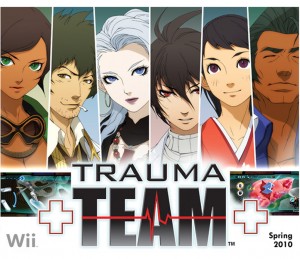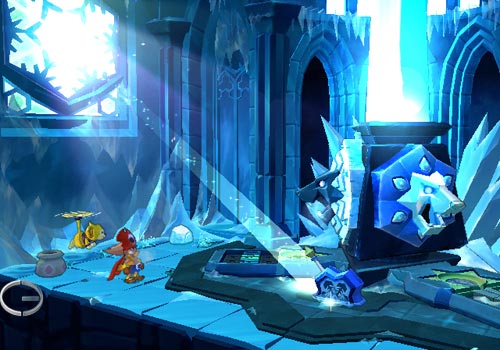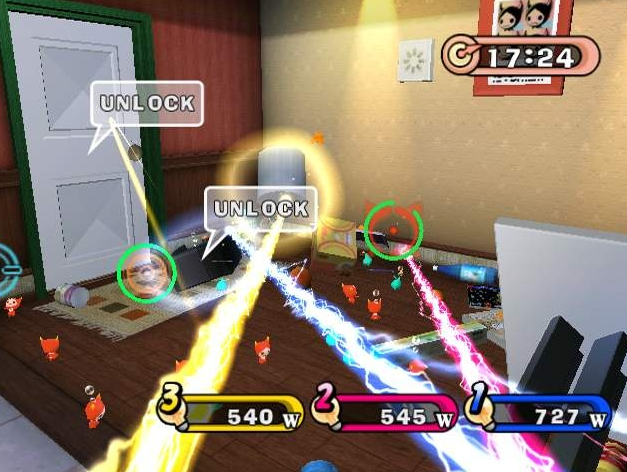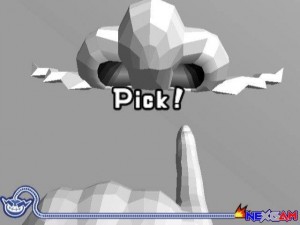Legend of Zelda: Skyward Sword

Meager map exploration, Fi, and dowsing aside, Skyward Sword is an excellent example of what swordplay should have been in Twilight Princess (and again, of course, Red Steel). As seen above, outlandish, and imprecise flailing of the WiiMote (waggle) will result in Link being severely punished by even the most basic enemies. I include Ghirahim here much to the pleasure and frustration alike of my readers. If the player was somehow lucky enough to avoid or cheese every fight up to this first “real” boss (I do not count The Imprisoned, because your initial fight with it is more of a tutorial than a real fight), s/he was in for a rude awakening. To beat Ghirahim, the player has feint attacks in order to fool him. Brilliant (and annoying; I hated the character, but w/e). Stalfos has remained one of my favorite enemies in the Zelda series. In SS, he also comes in the “four sword” variety, but the two-sword type will suffice here. In this image, the player MUST utilize a horizontal strike or suffer the loss of some heart points. Stalfos can change its guard to vertical parallel, requiring, as you guessed, vertical strikes with the WiiMote for its disposal. This small paragraph hardly does justice to the intensity of WiiMotionPlus integration in the game, nor can I adequately express how satisfying it is to perform a skyward strike, undoubtedly a tribute to Link’s full-health ranged attack in the original Legend of Zelda. But does any gamer really need me to explain to them why they should play Zelda?
TRAUMA TEAM

Trauma Center: Second Opinion is a Wii port of Trauma Center: Under the Knife for the DS, and Trauma Center: New Blood is a legitimate sequel, but Trauma Team is the zenith of the series. While the caption above is an attempt at humor, the game executes the various roles of the characters exceptionally well. The Japanese-to-English idioms are even translated adequately. However, this is not a review of the game, but a celebration of how the WiiMote is utilized. Thus, this game combines all the elements of the other Trauma Center entries, best described as virtual Operation, with speed, precision, and deductive reasoning. This game is the best doctor simulation this side of…well, Surgeon Simulator 2013! Interestingly enough, and counter-intuative to this article,my favorite modes in this game are diagnostics and forensics, even though they require minimal usage of the WiiMote. They are point-and-click modes, but these modes effectively contribute to both the development of the characters involved (Naomi is a throwback from the first Trauma Center game, now a corpse whisperer) and overarching plot. Outside of these modes, there is plenty of WiiMote usage and manipulation. Just click those highlighted words.
Zack and Wiki

Speaking of point-and-click games, Zack and Wiki is a throwback from a dead genre of the Secret of Monkey Island days, but it is significantly more deadly. Zack and Wiki is one of those “obscure” Wii games that a third party company (Capcom) took the time to produce, but because it was not Mario, it suffered abysmal sales. Most know this game via word-of-mouth, though most should know it by playing it. The attention to detail in this game is spectacular, right down to the various animations Zack demonstrates depending upon the level of success the player achieves by solving a puzzle. A “perfectly correct” solution grants the most ostentatious celebration, while taking a few tries such as switching the wrong panels in the image above will grant a moderate cheer. Of course, a death animation indicates a failure. Like most quality Wii games, the charm here lies in deceptive simplicity. As the puzzles increase in difficulty in terms of both magnitude and cleverness, the twisting of keys, the pulling of levers, the lifting of rocks, the rotating of columns, and the flipping of mirrors never ceases to entertain, particularly due to the aforementioned animations and scoring system.
Elebits

Maudlin story concerning a kid suffering from abandonment issues with his parents, I will justify the accusations that the Wii is a “kiddie” system by describing this game as charmingly vibrant and strikingly adorable, because it simply is. Elebits was not exactly a launch game, but it was close enough. Therefore, it occupies a special place in my heart as THE game which first revealed to me the potential of the Wii. In the simplest sense, Elebits is a hide-and-seek game; in the most complex sense, Elebits is a puzzle game. It is actually possible to fail a mission by not finding enough Elebits to charge the various interactive objects that the player might encounter inside or outside Kai’s house (I personally did not care much for the carnival levels; to me, this game was all about the house)within the time limit by accidentally killing Elebits with carelessly thrown objects falls from high elevation. In the image above, one can find Elebits hiding under the knocked over coffee table as well as behind the window. Reach a certain threshold of “charge,” and the player can then “unlock” other appliances or paths to find more Elebits, such as the door seen here. In other words, environment manipulation is the name of the game, and the number of objects that can be moved via WiiMote is staggering. Dishware, toys, canned and dried goods, they make no difference. Actually, the object does make a difference, because generally, the larger the object, the more hiding Elebits. At any rate, this game teaches the player how to use the “depth” feature of the Wii when moving objects from the background to the foreground, horizontally or vertically. The WiiMote is a simultaneously a virtual “hand” and “vacuum,” which is simply cool.
WarioWare: Smooth Moves

I do not condone drinking games, but if I did, this would be the game that I’d whip out of the collection while passing around the WiiMote (indeed, let us get this out of the way: the worst feature of this game is the fact that in multiplayer, only one WiiMote is ever in use). This is a masterpiece that can melt the iciest of hearts. This is a treasure that can tickle those who have suffered the most tragedy. While in serious competition after player one balanced a girl on a ball and player two has had to sprint to a virtual finish line, player three gets caught WTFing at shoving a pinky finger up the entrance of imitation Wario olfactory organ. That is nothing less than delightful to witness…or experience (the bald man drinking water and turning into a Chia Pet is equally amusing). How fun are the WiiMote controls? Well, I cannot describe them any better than the game itself does. Enjoy: